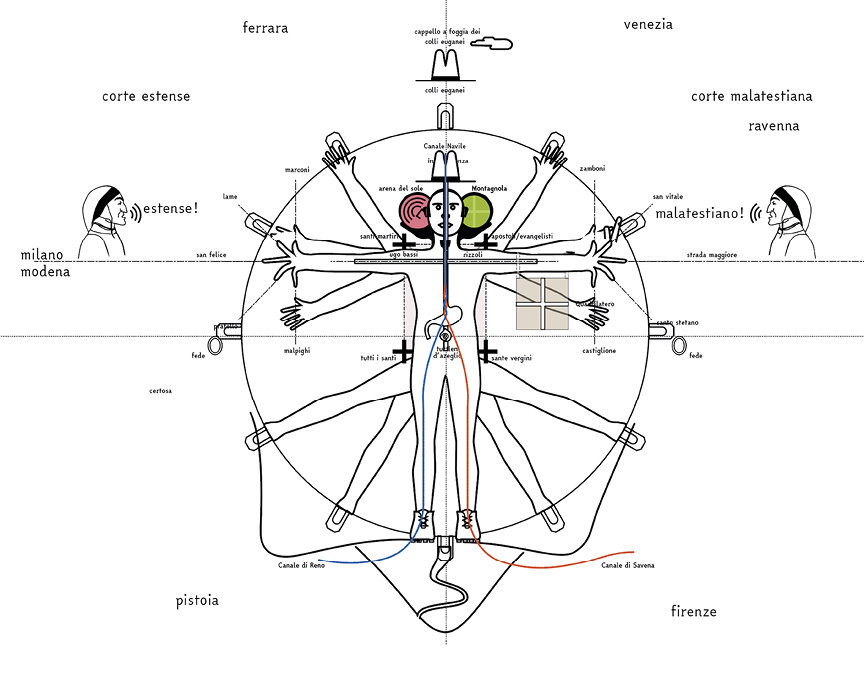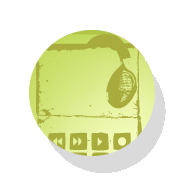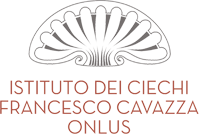Imagining the body as a map implies that it contains a sort of internal “cartography” in which every part has a specific function and contributes to overall functioning. Every muscle, bone, nerve, and organ represents a point on this map, a node interconnecting with all the others, all forming a complex and perfectly integrated system. The idea of the body as an ”organic device” emphasizes that due to these internal “gears,” it is not just a passive structure, but instead a dynamic entity that responds, adapts, and generates movement and force in relation to daily experience with outside spaces. The body is not a static machine, but instead a living system that constantly changes and interacts with its surroundings.
Now let’s consider the possibility that the body stores memories in this geography, thus becoming a map that incorporates places and its memories, or rather, our memories of places.
The map of Bologna is a perfect example. I’ve been studying Bologna’s history for years and transfer pieces of it into my body. I’ve spoken about this with Virgilio Sieni, a performer and choreographer based in Florence. For him it’s natural: dance is the form which, more than any other, uses the body to express emotions and concepts by means of movement. In dance, the body becomes a tool for artistic creation, drawing shapes and figures in space that are invisible to the eye but perceptible through movement and rhythm. Evey step, jump, or gesture can be seen as a temporary trace, a line that the body draws while moving through time and space. Choreographic movement can be considered a three-dimensional map on which every dancer traces their path on the “map” of the stage.

Personally, I’ve always just drawn the city’s history with my body: with arms open I’m the cardo and the decuman. A movement, a controlled gesture, and a new image drawn by my body take on form and meaning. The cardo is the axis from my feet to my head: via d’Azeglio and via Galliera. The decuman is my arms: via Ugo Bassi and Via Rizzoli. I stretch open my hands: the five streets that intersect at the beginning of via Ugo Bassi and the five that begin at the two towers. But if I touch my heart it tells me that over there, on the left of the cardo, is Neptune, who quenches the city’s thirst with his water, just as my heart provides blood to the cells that keep me alive.
This square also has a memorial to those who shed blood to protect our freedom.
The story has just begun.

.jpg)



.png)